Adventures in Earth’s Prehistory: Jane Gaskell’s Atlan Saga, Part III
Book Three (or Two, depending on the publisher) of Jane Gaskell’s Atlan Saga bears the same title as the series: Atlan. The previous volume(s), reviewed here (The Dragon) and here (The Serpent), left off where our heroine Cija married the “Dragon” General Zerd. Having just received the throne of the fabled continent of Atlan in a bloodless conquest, Zerd was crowned emperor, effectively making Cija empress.
Atlan commences with a brief introduction by a deserter called Scar, recounting preceding events with his own first person narrative as he legs his way to the capital. Meeting up with a bird-riding officer in search of a disguise, they switch places. Now mounted, Scar (and the introduction) fast forward to the capital where we encounter the Empress Cija.
Being empress is not all it is cracked up to be. Cija is still very much a loner and even though she’s surrounded by courtiers and handmaidens, she is lonely. Zerd’s wandering eye soon has him distracted by other women, leaving Cija to her own devices. Unto this scene arrives her old lover Smahil, and a brief tryst follows.
This is probably the right time to reveal a spoiler I’ve avoided in my previous reviews: Smahil is Cija’s half-brother. This is something Cija did not know when they first became lovers, but by the time he arrives in the capital, she is well aware of their familial relationship, yet is so desperately lonely she still shares her bed with him.
[Click the images for bigger versions]
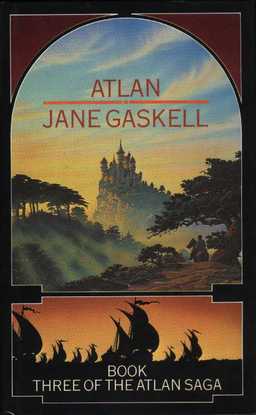
Exit Smahil. And in short order we discover that the Northern king, Zerd’s former monarch, has joined forces with the Southerners. The two once rival powers have amassed an invasion fleet which is on its way, bent on conquering Atlan. It would appear that the whole point of Zerd’s poorly trained and equipped army being sent to “ally” with the Southerners and subsequently invade Atlan was a pretext to get rid of the troublesome, yet brilliant general. Now that Zerd has managed to seize power in Atlan, it has become incumbent on the Northern king to deal with his ex-general himself.
The reason that the superior civilization of Atlan has stood against invasion for so long is that its once brilliant scientists surrounded the continent with a protective vacuum centuries before. This vacuum is still in place. Zerd — through his wheeling and dealing — managed to bring his army to Atlan through the same secret tunnel Cija used at the end of The Dragon. The problem for Zerd, and Atlan, is that the Northerners still have the mechanism for negating the vacuum, the same secret Zerd ostensibly possessed when he marched south to gain the assistance of the Southerners superior numbers.
Two momentous events shortly unfold. The allied Northern and Southern invasion force is successful in destroying Atlan’s protective vacuum, and Cija discovers she is pregnant — with the child of her and Smahil’s incestuous union. But there is respite for both these events.
The invasion army had the classic oversight of not considering What Thereafter: their fleet is dispersed and much of it destroyed by the resultant tidal wave after the vacuum’s sudden collapse, while for Cija, Zerd is ecstatic at learning his heir is on its way.
Atlan, like Jane Gaskell’s previous books, is divided into a few long chapters, each dedicated to a specific portion in Cija’s life. The first chapter comes to a close when she manages to speed the birth of her child, a boy called Nal, and when the reconstituted/surviving invasion army arrives and besieges the capital.
Winter has arrived and Cija and a small escort are dispatched to a safe place far in the interior, but not before she learns that the leader of the Northerner invasion forces is Sedili, the daughter of the Northern king. She is also Zerd’s first wife, and is technically still married to him — facts which he had not disclosed to Cija.
In chapter two we are reacquainted with the old Cija, she whose misadventures are tempered with her uncanny ability to survive and handle whatever life throws at her. This is no Jirel of Joiry warrior woman, just a slender new mother who must make do, and is all the more realistic for it. Cija’s convoy is first hounded by wolves, with whom she has her second encounter with Old Atlan. Shortly thereafter they are attacked by a party of Northern soldiers dispatched by Sedili to capture the empress.
Cija soon finds herself alone and destitute. While empress in name, without a retinue, guards and no purse full of cash, she finds herself at the mercy of the haughty and abusive mistress of a nearby inn, where she finds employ as a scullery maid and general servant in exchange for shelter and food. The rest of the chapter deals with her trials and tribulations at The Red Inn. (I can’t pin down a specific reason, but this chapter reminded me of JV Jones’s The Bakers Boy.)
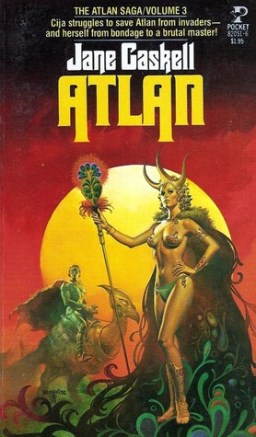
As the winter winds down, Cija makes friends with guests who have overwintered at the inn. She lets her guard down and allows herself to trust them, only to find they plan to betray her. Leaving the inn with her new friends, she soon finds they have wound their way back, but in a plot twist, she is rescued and her luck changes again. Before long she is one again Empress Cija, safely ensconced with a small retinue at the crumbling country castle she was initially bound for.
Castle life is rustic but pleasant. The premature and sickly Nal is growing and has become a healthy toddler. After a brief visit by Zerd, taking a break from the war, Cija finds herself pregnant again and eventually gives birth to a daughter who mshe names Seka. Unlike the fair, almost translucent skinned Nal, Seka is definitely Zerd’s offspring with her light blue skin, although she has no scales.
Life in the backwoods castle is not all rustic relaxation. The reader is gradually introduced to the immense size of Atlan and the fact that there is quite a difference between the civilized cities on the coast and the interior, the aforementioned Old Atlan. Gaskell draws on elements of Mary Shelly as Cija becomes more acquainted with the castle.
The war continues, and Zerd’s second wife Lara arrives, along with her father and his army from the forest. Due to certain points of honor he is seeking to ally with Zerd, who is seen to have put aside Lara due to her indiscretions in the Southern capital. Zerd for his part appears to be operating a guerrilla campaign along the coastal areas, leaving inner Atlan to its own devices.
On the home front, Cija’s misadventures don’t cease. On a picnic with her children and accompanied by Scar (he of the introduction, who has found his way into the household), they become stranded and he shows his true colors. Humiliated by his sexual assault, Cija is set adrift with her children on a small raft during a raging storm. Fortune does however favor our heroine and the family eventually find their way back to the coast.
Foraging in the wilds reveals Nal’s uncanny gift for survival. Though only about five years old, he is precocious and intelligent beyond his years. Old Atlan favors him and seems to recognize him as its rightful ruler, as opposed to the Emperor Zerd and the boy king he deposed. Cija and her children find themselves briefly rescued before luck turns again and they become prisoners of Princess Sedili, Zerd’s first wife.
Escorted back to the castle by Sedili’s army, Cija finds herself stripped of her title as empress and charged with adultery. She is to be dispatched to the capital to face charges. Sedili is keen to align herself with Zerd and win her estranged husband back. However, Old Atlan comes to the rescue of its true emperor, Nal, and the castle is overrun with wolves and other animals, inter alia. Making an escape, Cija and Seka are separated from Nal, and they do not know whether he survived the castle battle or not.
Wandering through the wilderness, Cija and Seka meet up with some past acquaintances. By now Cija has once again taken charge of her life and does not wish to be involved in the war, with Zerd, or with any of the trappings of being an empress. Atlan itself has lost the sense of wonder she once held for it. The story is winding down and Cija is looking to start a new chapter in her life. Somewhere else, somewhere that is not Atlan.
As a reviewer I am generally pretty easy going. I have some complaints about Atlan, but these are minor. I have said this before, but it bears repeating: Jane Gaskell is a master at describing scenery. It is so easy to visualize what she is portraying in her narrative. Her ability to take mundane events and make them part of a compelling story is a wonder to behold, and for a staid sword and sorcery reader like me it’s really refreshing.
That said, I do feel the book suffers a little from some inconsistencies. The Orbit version I read weighed in at 288 pages of relatively small font, but I got the feeling it had been cut here and there. As a paperback 1985 reprint of a 1965 novel, I wondered if Orbit Futura had shortened the page count, but checking the Internet Science Fiction Database I see the original Hodder & Stoughton hardback had a similar page count. Either the novel was poorly edited down to size, or Ms Gaskell allowed certain problems to creep in.
While I do not wish to spend a lot of time nit-picking, three items in particular do bother me:
- There is mention of a massive iron spire that extends far into the sky. But a native Atlantian dismisses it with a simple “we don’t talk about it,” leaving the reader to wonder what its import is, if any.
- Old Atlan seems to be on the peripheral throughout the story, but never really gets properly dealt with. Maybe I just expected too much, but at times the narrative felt like it was about to follow A Midsummer Night’s Dream, or even C. J. Cherryh’s Morgaine Saga, and draw the reader into the land of Faerie (like Mists of Avalon), only for it not to occur.
- The final chapter of the book seems really rushed, especially in comparison with the rest of the book. I got the feeling RPG players are familiar with when someone consults a clock, realizes it’s way late, and some quick action is shoe horned in to round out the evening.
That all said, Atlan is still an entertaining book, and most readers will get an inkling what the author is trying to say. Cija is a heroine not because she is a great warrior or sorceress, but because of her ability to survive, grow and be her own person. She has insecurities which make her real, from believing she is too thin and unattractive to wanting to just be left to her own devices. Older, disillusioned yet still very much alive and determined, she moves forward with her life. In the words of Rico of Starship Troopers (Robert E Heinlein): “She took her lumps.”
In terms of my favorite cover? This time it has to be the Paperback Library first printing by Frank Frazetta. While the Orbit Futrura cover is compelling, and the Pocket Books (Boris) and Tandem covers are attractive, the Frazetta one just ticks all the right boxes for me.
Read the other articles in this series:
Jane Gaskell’s Atlan Saga, Part I
Jane Gaskell’s Atlan Saga, Part II
Jane Gaskell’s Atlan Saga, Part III
Jane Gaskell’s Atlan Saga, Part IV
Tony Den’s most recent article at Black Gate was Atlantis, Vikings, and the Hordes of Kublai Khan: Merlin’s Ring by H. Warner Munn: Part II. His personal website RuneQuest.orc is busy undergoing a slow migration to WordPress.
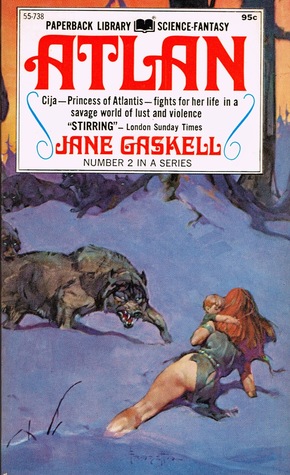
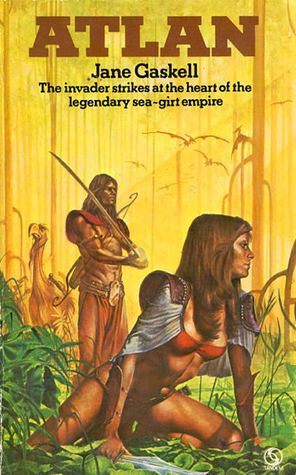
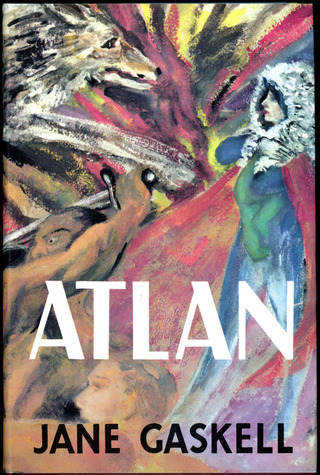
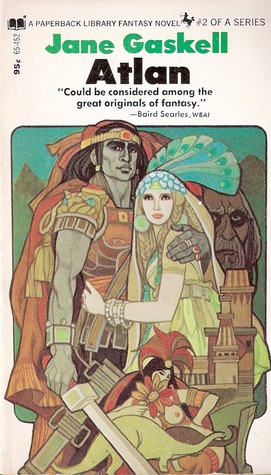
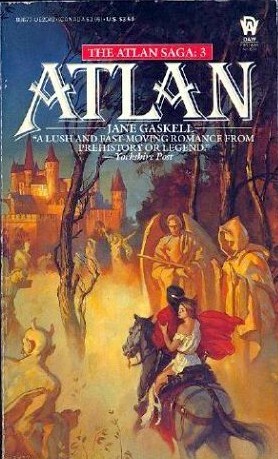
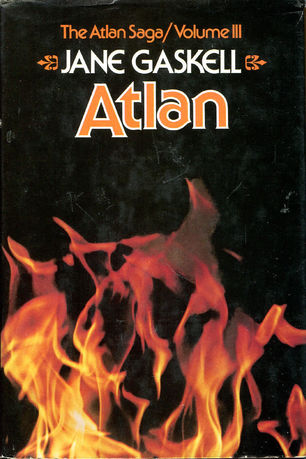

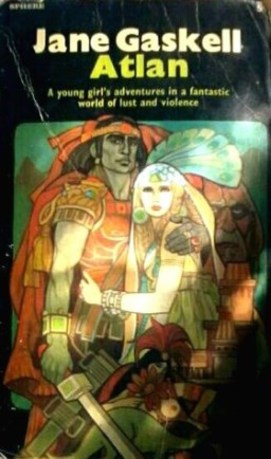
I still like the second Paperback Library style.
St. Martin’s Press (the photograph of flame) was the cover on the hardcovers I was checking out from the library back in high school.
Someday I really need to revisit these. I just desperately wish that they’d be rereleased in eBook format.
Joe H. Agreed it’s surprising for a series republished so many times that it has not come out in an electronic format. Maybe an opportunity for someone to look into.
I assume it’s the usual combination of rights issues, lack of a good source file, and perceived lack of interest/demand.
But maybe Open Road Media or somebody like that will eventually manage it.
This series, in particular, is one I keep buying for the various covers (and different editions of Volume 1, too). I also like best the Frazetta/Paperback Library cover, which Mr. Den singled out. But the Boris/Pocket Books cover is nice, and I do not have that one, yet.
Hello. Cpover art for the Orbit/Futura editions of these books are all by Mick van Houten.
Wow thanks Simon. This is the first solid lead I have received. I will look him up.